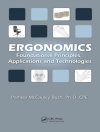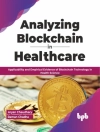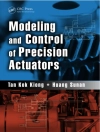The book focuses on the innovative application of Visible Light Communication (VLC) within the realm of vehicular networks to enhance autonomous driving and intelligent transportation systems (ITS). The purpose is to explore how VLC can facilitate high-speed wireless data transmission using the visible spectrum of light, which promises a huge bandwidth, low confinement, and usage of existing LED head/taillights. Advance topics such as MIMO, Optical OFDM, Precoding/Equalization and adaptive noise cancellation are studied in detail in the realms of VLC. Furthermore, it examines the potential of VLC to complement existing communication Cellular V2X standards in scenarios demanding low latency and high reliability. The integration of Artificial Intelligence (AI) and Machine Learning (ML) in VLC systems are also explored.
Key Features:
-
Includes detailed modular multi-reflection channel model; that can be used with the required complexity.
-
Includes Artificial Intelligent algorithms to alleviate the effect of bright sun light, a major concern in outdoors.
-
Investigates some topics for first time such as shadowing effect, coherence time and denoising schemes.
-
Advance topics such as MIMO, Optical OFDM, Precoding and Equalization are studied in detail in the realms of VLC.
-
Chapter organization provides a systematic overview of the subject, accessible to students of various levels including undergraduate and graduate students and practicing engineers.
विषयसूची
Preface
Acknowledgements
Author biographies
List of acronyms
List of symbols
1 Introduction
2 Nuts and bolts of V2X VLC systems
3 Impacts of directional propogation
4 Channel modeling for V2V-VLC system
5 Adaptive optical OFDM for V2X communications
6 Precoder and equalizer in 2 X 2 MIMO-VLC systems
7 Sunlight effects and denoising schemes
8 Hybrid channel-based foglet-assisted smart asset reporting
लेखक के बारे में
Xavier Fernando is a Professor at Toronto Metropolitan University (TMU), Toronto, Canada. He has (co)authored over 200 research articles, three books (one translated to Mandarin) and holds three patents. He is the Director of TMU Intelligent Communications and Computing Lab that has received total research funding of over $5 Million since 2008 from industry and government. His research interests are in optical and wireless communications. He is a senior member of IEEE, and he was an Associate Editor for the IEEE IOT Journal. He was an IEEE Communications Society Distinguished Lecturer and delivered over 80 invited talks. He has chaired the IEEE Toronto Section (2012-13) and IEEE Canada Central Area (2016-17) serving the IEEE Region-7 Board. Currently he serves as the IEEE Canada (Region-7) Vitality Coordinator. His work has won 30 awards and prizes so far including, number of IEEE awards, Professional Engineers Ontario Award in 2016, IEEE Microwave Theory and Techniques Society Prize in 2010, Sarnoff Symposium Prize in 2009, Opto-Canada best poster prize in 2003 and CCECE best paper prize in 2001. TMU nominated him for the Top 25 Canadian Immigrants award in 2012 in which was a finalist. He has been in the organizing/steering/technical program committees of numerous conferences and journals. He was the General Chair for the IEEE International Humanitarian Technology Conference (IHTC) 2017 and IEEE Canadian Conference on Electrical and Computer Engineering (CCECE) 2014. He was a Member of Board of Governors of TMU (formerly Ryerson University) during 2011- 12. He is a program evaluator for ABET (USA). He was a visiting scholar at the Institute of Advanced Telecommunications (IAT), UK in 2008 and MAPNET Fellow visiting Aston University, UK in 2014.
Hasan Farahneh is a professor at the department of Electrical Engineering, School of Engineering, University of Jordan, Amman, Jordan since 2004. He has (co)authored over 30 research articles and two books. His research interests are in optical wireless communications. He is a senior member of IEEE. He has been in the organizing/steering/technical program committees of numerous conferences and journals. He was a visiting scholar at many European Institutes through the Erasmus program of visible light communication.












